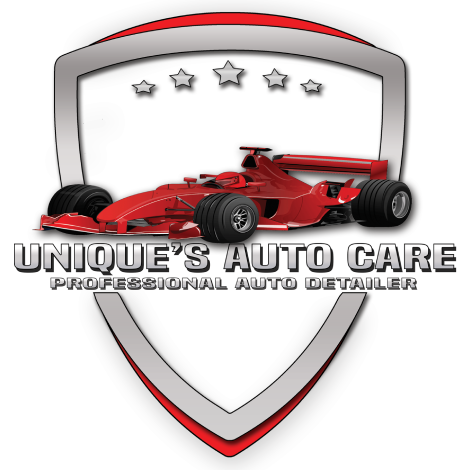Welcome to the ultimate guide on PPF installation. Paint Protection Film (PPF) is a clear, durable film applied to your vehicle’s exterior surfaces to protect it from scratches, chips, and other environmental damage. Given the investment you make in your car, it’s only natural to want to keep it looking its best for as long as possible. PPF offers an excellent solution, combining aesthetics with functionality.
At Unique’s Auto Care, we understand the importance of maintaining your car’s appearance and value. Our professional team uses top-quality PPF materials and advanced installation techniques to ensure your vehicle receives the best possible protection. From the moment you book an appointment with us, you’ll experience exceptional customer service and meticulous attention to detail.
Whether you’re new to the concept of PPF or looking to enhance your car’s protection, this guide will walk you through everything you need to know. We’ll cover the benefits, the installation process, costs, and essential maintenance tips. By the end, you’ll have a comprehensive understanding of how PPF can safeguard your vehicle for years to come.
Ready to give your car the ultimate layer of protection? Contact us today to schedule your PPF installation or to learn more about our services. Let’s make your car shine like new!
Benefits of PPF for Your Car

When it comes to protecting your vehicle, Paint Protection Film (PPF) offers a myriad of benefits that make it a worthwhile investment. Here are some of the key advantages:
- Scratch and Chip Resistance: PPF acts as a barrier against minor scratches, rock chips, and other forms of physical damage. This is especially beneficial on highways, where debris can easily cause damage to your car’s paint.
- UV Protection: The film provides a shield against harmful UV rays, preventing your car’s paint from fading and maintaining its vibrant color for years. This is particularly useful for vehicles frequently exposed to the sun.
- Self-Healing Properties: Many high-quality PPFs have self-healing capabilities. Minor scratches and swirls disappear with exposure to heat, whether from the sun or a heat gun, keeping your car looking flawless.
- Stain Resistance: PPF helps repel contaminants such as bird droppings, tree sap, and road tar, making it easier to clean your vehicle and reducing the risk of permanent stains.
- Hydrophobic Properties: The film’s water-repellent surface means rain and other liquids bead up and roll off, making your car easier to wash and keeping it cleaner for longer periods.
- Enhanced Resale Value: By maintaining your car’s exterior in pristine condition, PPF can significantly boost its resale value. Future buyers will appreciate the care and protection you’ve invested in the vehicle.
These benefits make PPF an excellent choice for any car owner looking to preserve the appearance and value of their vehicle. In the next section, we’ll delve into the installation process to show you how this remarkable product is applied to your car.
How PPF Installation Works

Understanding how Paint Protection Film (PPF) installation works can help you appreciate the meticulous process involved in safeguarding your vehicle. The following steps outline the typical installation procedure:
- Surface Preparation: The first and most crucial step is preparing the vehicle’s surface. This involves thoroughly washing and decontaminating the car to remove any dirt, grease, or other contaminants. Even the smallest particles can affect the adhesion and appearance of the film.
- Paint Correction: Any existing imperfections, such as scratches or swirl marks, need to be corrected. This ensures that the surface is as smooth and flawless as possible before the film is applied.
- Template Selection and Cutting: High-quality PPF installations often use computer-generated templates specific to your car’s make and model. These templates are precisely cut to fit the contours and edges of your vehicle, ensuring a seamless application.
- Application Solution: A special solution is sprayed onto both the adhesive side of the film and the car’s surface. This solution allows the installer to reposition the film during application, ensuring an exact fit.
- Film Application: The film is carefully placed onto the car’s surface. Skilled installers use squeegees to remove any air bubbles and excess solution, ensuring a smooth, bubble-free finish. The edges are meticulously wrapped around the panels for a nearly invisible appearance.
- Final Inspection and Curing: After the film is applied, a final inspection is conducted to ensure there are no flaws. The vehicle may need to sit for a few hours to allow the film to fully adhere and any remaining moisture to evaporate.
Each step in the PPF installation process requires precision and expertise to achieve the best results. In the following section, we’ll discuss the costs associated with PPF installation, helping you make an informed decision for your vehicle’s protection.
Cost of PPF Installation

When considering Paint Protection Film (PPF) for your vehicle, it’s important to understand the costs involved. The price of PPF installation can vary widely based on several factors:
- Type and Quality of Film: There are different grades of PPF available, ranging from standard to premium options. Premium films often offer better clarity, durability, and self-healing properties, but they come at a higher cost.
- Coverage Area: The extent of coverage significantly impacts the overall cost. You can opt for partial coverage, such as the front bumper, hood, and side mirrors, or full coverage that protects the entire vehicle. Naturally, more extensive coverage results in a higher price.
- Vehicle Size and Complexity: Larger vehicles or those with more complex curves and contours require more film and time for installation, which can increase the cost.
- Installer Expertise: The skill level and reputation of the installer play a crucial role in the cost. Experienced professionals who use advanced techniques and high-quality materials may charge more, but their expertise ensures a flawless application.
- Location: Prices can also vary based on geographic location. Urban areas with higher living costs may have higher rates for PPF installation compared to rural areas.
- Additional Services: Some installations may include extra services like paint correction, ceramic coating, or maintenance packages, which can add to the overall cost.
On average, partial PPF coverage can range from $500 to $2,000, while full vehicle coverage can range from $2,000 to $7,000 or more. It’s essential to get quotes from reputable installers and understand what is included in the price to make an informed decision.
In the next section, we’ll explore how to maintain your PPF to ensure it continues to protect and enhance your vehicle for years to come.
Choosing the Right PPF Installer
Selecting the right installer for your Paint Protection Film (PPF) is crucial to ensuring a high-quality application that will protect your vehicle effectively. Here are some key considerations to help you make an informed choice:
- Experience and Expertise: Look for installers who have extensive experience and specialized training in PPF application. Experienced installers are more likely to deliver a flawless finish and address any complex areas of your vehicle.
- Reputation and Reviews: Check online reviews and testimonials from previous customers. A reputable installer will have positive feedback and a portfolio of successfully completed projects. Word-of-mouth recommendations can also be valuable.
- Quality of Materials: Ensure that the installer uses high-quality PPF materials from reputable manufacturers. Premium films offer better clarity, durability, and self-healing properties, providing superior protection for your vehicle.
- Warranty and Aftercare: A good installer should offer a warranty on their work and the PPF product. Additionally, inquire about aftercare services and maintenance tips to keep the film in optimal condition.
- Transparency and Communication: Clear communication is essential throughout the installation process. The installer should be transparent about the costs, coverage options, and any additional services offered. They should also be willing to answer any questions you have.
- Facility and Equipment: Visit the installer’s facility if possible. A clean, well-organized workshop with professional-grade equipment is indicative of their commitment to quality. The environment should be conducive to a dust-free and precise installation.
Taking the time to research and choose the right PPF installer can make a significant difference in the final results. A skilled and reputable installer will ensure that your vehicle receives the best possible protection and maintains its pristine appearance.
In the next section, we will delve into the maintenance and care tips to keep your PPF looking its best for years to come.
Maintenance Tips for PPF Protection

Maintaining your Paint Protection Film (PPF) is essential to ensure that it continues to protect your vehicle and maintain its appearance. Here are some practical tips to help you keep your PPF in top condition:
- Regular Washing: Wash your car regularly using a gentle automotive shampoo and a soft microfiber wash mitt. Avoid using harsh chemicals or abrasive brushes, as these can damage the film. Rinse thoroughly to remove any soap residue.
- Avoid Automatic Car Washes: While it may be convenient, automatic car washes can be too aggressive for PPF. The brushes and high-pressure jets can cause scratches and lift the edges of the film. Opt for hand washing instead.
- Use the Right Drying Techniques: After washing, dry your vehicle with a clean microfiber towel. Blotting rather than wiping can help prevent swirl marks and scratches. A leaf blower or air dryer can also be used to remove excess water without direct contact.
- Park Wisely: Whenever possible, park your car in a garage or shaded area to protect the PPF from prolonged exposure to UV rays, which can cause deterioration over time.
- Avoid Harsh Chemicals: Steer clear of using chemical cleaners, degreasers, or solvents on your PPF. These substances can break down the film’s protective properties and cause discoloration.
- Inspect Regularly: Periodically inspect your PPF for any signs of damage or lifting edges. Addressing minor issues early can prevent them from becoming more significant problems.
- Waxing and Sealants: While PPF is designed to be low-maintenance, applying a PPF-safe wax or sealant can enhance its gloss and provide an extra layer of protection. Ensure the product is specifically formulated for use on PPF.
By following these maintenance tips, you can keep your PPF looking as good as new and ensure it provides long-lasting protection for your vehicle. Remember, a well-maintained PPF not only preserves your car’s appearance but also helps maintain its resale value.
If you have any questions or need professional advice on maintaining your PPF, call or contact us at Unique’s Auto Care. We’re here to help you keep your vehicle in pristine condition!
